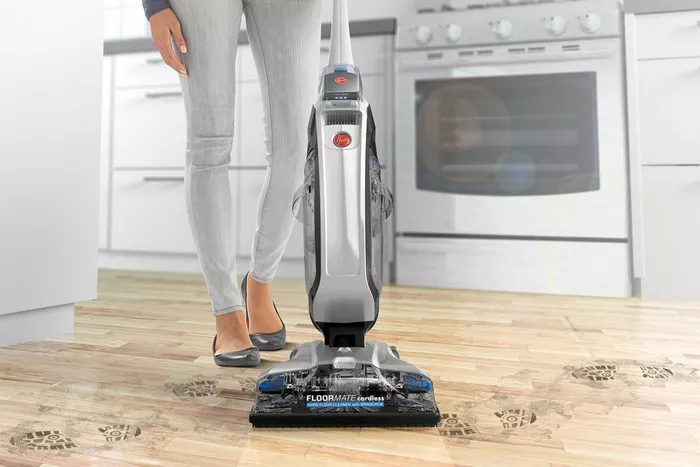Maintaining pristine wood floors can be challenging, especially when faced with persistent dirt even after mopping. Several factors could contribute to this issue, including:
1. Using a dirty mop: Dirty mops simply redistribute dirt instead of removing it, leaving floors looking dull and unclean.
2. Not rinsing the mop frequently: Failure to rinse the mop regularly allows grime to accumulate, diminishing its cleaning effectiveness.
3. Using too much soap or cleaner: Excessive soap can leave behind a sticky residue, attracting more dirt and making floors appear dirty.
4. Not changing the mop water frequently: Reusing dirty water spreads dirt instead of removing it, leading to unsatisfactory results.
5. Missing areas when mopping: Inadequate coverage leaves patches of dirt untouched, undermining the overall cleanliness of the floor.
6Not s. crubbing stuck-on grime: Neglecting to scrub stubborn spots allows them to persist, detracting from the floor’s appearance.
How to Fix the Issue
To achieve spotless wood floors, follow these corrective measures:
1. Start with a fresh, clean mop head or pad: Ensure your mop is free of dirt and debris before beginning to prevent cross-contamination.
2. Rinse the mop head in clean water every few passes: Regular rinsing prevents dirt buildup, allowing the mop to effectively clean the floor.
3. Use the recommended amount of floor soap or cleaner: Following manufacturer guidelines ensures optimal cleaning without leaving behind residue.
4. Empty and refresh the mop bucket with clean water every 10-15 minutes: Regularly changing the water prevents dirt from being spread around.
5. Mop slowly and methodically, ensuring no spots are missed: Take your time to cover the entire floor surface thoroughly, paying attention to corners and edges.
6. For stubborn grime, use a scrubber or spot-clean: Target tough stains with a scrub brush or appropriate cleaning solution to achieve a deeper clean.
Preventative Measures
Adopting preventive strategies can help maintain clean wood floors over time:
1. Regular vacuuming before mopping to remove loose dirt: Eliminating loose debris prevents it from being pushed around during mopping.
2. Using the right type of mop for wood floors: Choose a mop specifically designed for wood surfaces to avoid damage and ensure effective cleaning.
3. Avoiding excessive water which can damage wood floors: Use a damp mop rather than a wet one to prevent water damage and warping of wood.
Product Recommendations
Selecting the right cleaning products and tools is essential for optimal results:
1. Suggest suitable cleaning products and tools for wood floors: Opt for gentle yet effective cleaners designed specifically for wood surfaces, paired with a microfiber mop for superior dirt removal.
2. Provide alternatives for eco-friendly or homemade cleaning solutions: For environmentally conscious consumers, recommend eco-friendly or DIY cleaning solutions using ingredients like vinegar or baking soda.
Maintenance Tips
Implementing a regular cleaning routine and proper maintenance practices can prolong the life and appearance of wood floors:
1. Regular cleaning schedule: Establish a consistent cleaning schedule to prevent dirt buildup and maintain the floor’s appearance.
2. Proper drying techniques to avoid residue: Thoroughly dry the floor after mopping to prevent streaks and residue from forming.
3. Protecting floors from heavy foot traffic and pets: Place rugs or mats in high-traffic areas and trim pets’ nails regularly to minimize scratches and wear on wood floors.
Troubleshooting Guide
Addressing specific issues promptly can help resolve common floor cleaning challenges:
1. Solutions for dealing with streaks, dullness, or stickiness after mopping: Adjusting cleaning techniques or using a different cleaning solution can often alleviate these issues.
2. Solutions for dealing with hard water or outdoor pollution: Consider using distilled water or installing a water softener to combat hard water, and regularly sweep or vacuum outdoor entryways to minimize dirt tracked indoors.
User Engagement
Encouraging user participation fosters a sense of community and knowledge sharing:
Provide a comments section for community advice: Invite readers to share their own cleaning tips, experiences, and questions, facilitating an exchange of ideas and solutions.
Conclusion
Achieving clean wood floors requires a combination of proper technique, suitable products, and preventive maintenance. By addressing common causes of dirty floors after mopping, implementing effective cleaning strategies, and adopting preventive measures, you can enjoy pristine wood floors that enhance the beauty of your home for years to come. Remember, regular maintenance and attention to detail are key to maintaining the natural elegance of wood flooring.

